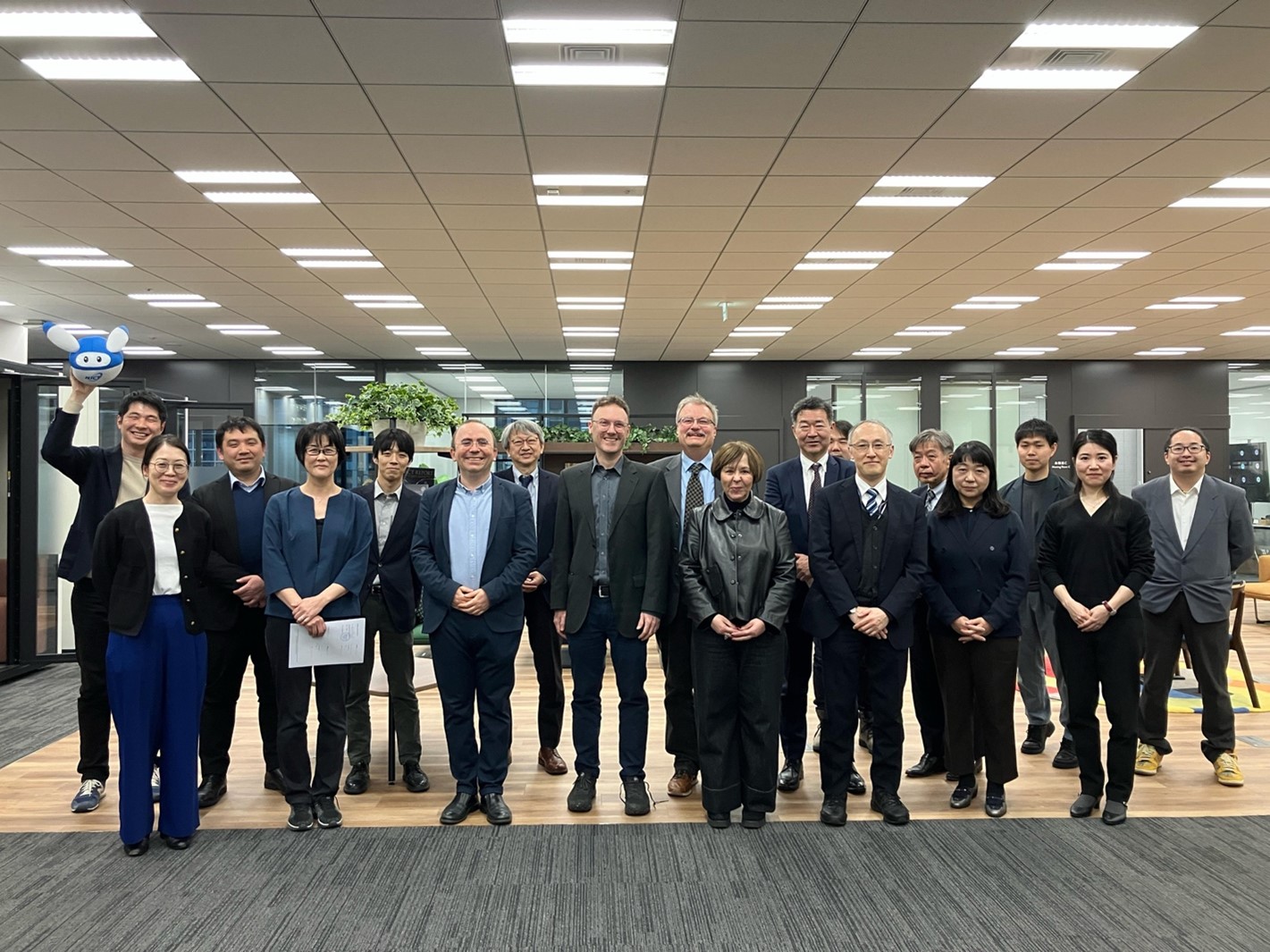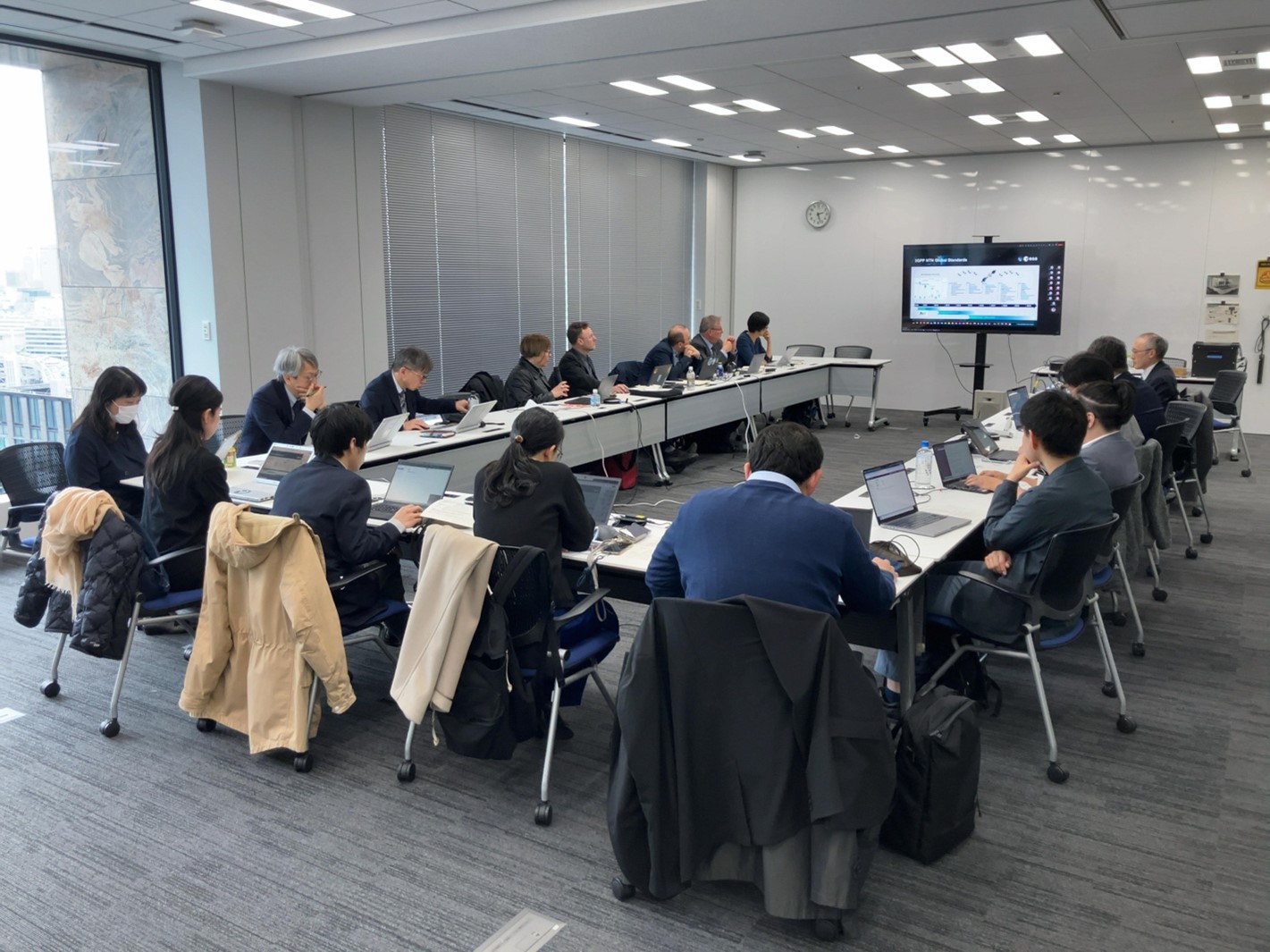ESA drives European and Japanese Partnerships for 5G/6G technological collaboration

The European Space Agency (ESA) and the National Institute of Information and Communications Technology (NICT) of Japan met at the NICT Innovation Center in Tokyo on 31 March. The meeting discussed the key results of trials resulting from the ESA-NICT collaboration on 5G/6G and satellite, the lessons learned, and technical areas of interest for an extension of the collaboration, funded under ESA’s Space for 5G/6G and Sustainable Connectivity.
ESA and NICT first signed a Letter of Intent in 2018 on joint efforts for cooperation in the field of 5G satellite communications. The agreement has been organised in phased activities, designed to enable long-term success and benefit both European and Japanese industry.
ESA and NICT support their own Industries to investigate technology path finders for global satellite communication networks convergence, integration in 5G and validate use cases of interest, such as natural disaster prevention and mitigation, global maritime transportation, and Internet of Things (IoT) to cover oceans and airspaces.
The project brought together a European industrial team, primed by Eurescom GmBH with Fraunhofer FOKUS as technical manager. The Japanese industrial team was led by Japan Radio Co., Ltd, with SKY Perfect JSAT Corporation and the University of Tokyo as partners.
Under the first phase, industry partners worked on the interconnection of local 5G systems via satellite, as well as the management of long-distance networks between Europe and Japan. The teams achieved a network quality evaluation of satellite and 5G connection, working to understand the feasibility of satellite 5G networks via international long-distance communications, as well as the successful transmission of 4K Video and IoT Data.
The second phase investigated and validated multi-orbit (geostationary (GEO) / low Earth orbit (LEO)) 5G transport solutions and the multi-5G-Core enhancements, which are typical for international communications. These topics were introduced and are now being discussed in 3GPP Rel 19/20.

Under this phase, the European team concentrated on links performance monitoring; dynamic path selection between GEO-LEO-Terrestrial networks; and data path management. Meanwhile, the Japanese team concentrated on network slicing, Quality of Service, active bandwidth control and application detection in switching GEO-LEO-Terrestrial link scenarios.
Technical achievements from European partners included: experimenting and validating services in Public Protection and Disaster Relief (PPDR) fire-fighting scenarios with 5G temporary local networks interconnected via satellite, including User Equipped UAVs for video monitoring, with experimentation taking place in Berlin, Brandenburg area in Germany.
Overall, the European and Japanese Phase 2 trials confirmed the feasibility of real-time switching of multi-orbit satellite links, and the associated network components and applications sessions. Additionally, the Over the Air validation trials demonstrated the feasibility of the seamless path switching.
Looking forward, the collaboration between European and Japanese partners will continue, focusing on extending the collaboration towards Beyond 5G, and 6G Non-Terrestrial Networks (NTN). ESA and NICT are exchanging with their own Industry to identify their areas of interests and capabilities.
“Expanding our international partnerships in close collaboration with industry is essential to securing the long-term competitiveness of the space sector. ESA is proud to be playing a central role in enabling and advancing these collaborations. We will continue our bilateral exchanges with NICT to explore opportunities for extending our cooperation beyond Phase 2,” said Antonio Franchi, ESA’s Head of the Space for 5G/6G and Sustainable Connectivity programme.
“Intercontinental communications are a key differentiator for 5G/6G NTN," said Maria Guta, Senior 5G/6G Satellite Solutions Architect at ESA. “Globally connected regions served by private 5G/6G networks and linked through NTN represent a vital use case. Investigating key challenges across multiple use cases and vertical sectors, alongside global scale experimentation, is essential to accelerate developments, deployment and ecosystem growth. The collaboration between European and Japanese industries has proven very valuable, laying the groundwork for continued cooperation and helping to align ecosystems and support the path toward viable NTN deployments.”
Hiroaki Harai, Director General of the Network Research Institute at NICT, said: "We are proud to have been part of this Japan-Europe international collaboration, successfully completing the joint experiment on satellite-5G interconnection and the multi-backhaul demonstration through these two phases of the project. This project has strengthened the collaboration between NICT and ESA, as well as among Japanese and European stakeholders in the field of NTNs. We will continue our efforts to advance NTNs through ongoing research and further international collaboration."


